
Journal of Optical Microsystems
Scope & Guideline
Empowering Research in Cutting-Edge Optical Applications
Introduction
Aims and Scopes
- Optical System Design and Fabrication:
The journal emphasizes the design and production of optical systems, including novel fabrication techniques such as two-photon polymerization and 3D printing, to create intricate structures and components. - Integration of Photonic and Electronic Systems:
There is a strong focus on the integration of photonic systems with electronics, particularly in the context of silicon photonics and microelectromechanical systems (MEMS), facilitating new functionalities and applications. - Advanced Sensing Technologies:
Research on advanced optical sensing technologies, including gas sensing, imaging, and spectroscopy, is a core area, highlighting the application of microsystems in diagnostics and environmental monitoring. - Novel Material Development:
The journal explores the development and application of novel materials, such as liquid crystals and chalcogenides, for enhancing optical properties and enabling new functionalities in microsystems. - Biomedical Applications:
A significant portion of the research is directed toward biomedical applications, including endomicroscopy and optical coherence tomography, aiming to improve diagnostic and therapeutic techniques. - Emerging Display Technologies:
The journal covers innovative display technologies, focusing on advancements in liquid crystal displays and other reflective technologies, which have implications for augmented and virtual reality.
Trending and Emerging
- 3D Printing and Additive Manufacturing:
There is a growing emphasis on the use of 3D printing and other additive manufacturing techniques to create complex optical components, such as microlenses and photonic structures, which enhances design flexibility and production efficiency. - Hybrid Photonic Systems:
The integration of hybrid photonic systems, combining various materials and technologies, is gaining momentum, particularly in the development of multifunctional devices for telecommunications and sensors. - Biophotonics and Medical Imaging:
Research in biophotonics, especially concerning medical imaging technologies like endomicroscopy and optical coherence tomography, is on the rise, driven by the demand for advanced diagnostic tools. - Liquid Crystal Technologies:
Liquid crystal technologies are emerging as a significant focus area, with applications in tunable optics and displays, particularly for augmented and virtual reality systems. - Nano-Optomechanics and Sensing:
There is an increasing interest in nano-optomechanical systems, which leverage the interaction between light and mechanical motion at the nanoscale for enhanced sensing capabilities. - Smart and Adaptive Optical Systems:
The development of smart and adaptive optical systems, which can dynamically adjust their properties in response to environmental changes, is becoming a prominent theme, reflecting the need for responsive technologies in various applications.
Declining or Waning
- Traditional Optical Components:
There has been a noticeable decrease in publications focused on conventional optical components such as lenses and mirrors, as the field shifts towards more integrated and multifunctional microsystems. - Passive Optical Devices:
Research on passive optical devices, which do not incorporate active components or require complex control systems, appears to be declining, reflecting a trend towards active and tunable systems. - Low-Resolution Imaging Technologies:
The interest in low-resolution imaging technologies has waned, as newer methods and systems capable of high-resolution imaging and advanced analysis techniques gain traction. - Basic Optical Characterization Techniques:
Studies focused solely on fundamental optical characterization techniques without integration into broader system applications are less frequently published, indicating a shift towards more applied research.
Similar Journals

OSA Continuum
Illuminating Research in Atomic and Molecular PhysicsOSA Continuum, published by the Optica Publishing Group, is a distinguished open access journal dedicated to advancing research in the realms of Atomic and Molecular Physics, Optics, and Electronic and Electrical Engineering. Since its inception in 2018, this journal has rapidly positioned itself as a significant platform for disseminating cutting-edge findings, achieving impressive Scopus rankings with a 61st percentile in Electrical and Electronic Engineering and 57th in Atomic and Molecular Physics. Based in the United States, the journal not only promotes scholarly dialogue among researchers and professionals but also plays a crucial role in bridging theoretical advances with practical applications in optical and material sciences. Its open access format ensures broader visibility and accessibility of research outputs, fostering innovation and collaboration across disciplines. With its ongoing commitment to excellence, OSA Continuum is crucial for anyone involved in these dynamic fields.
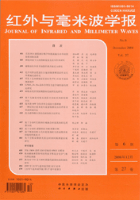
JOURNAL OF INFRARED AND MILLIMETER WAVES
Connecting Scholars Through Cutting-Edge ResearchJOURNAL OF INFRARED AND MILLIMETER WAVES is a pivotal peer-reviewed journal published by SCIENCE PRESS, dedicated to advancing research in the fields of atomic and molecular physics as well as optics. With an ISSN of 1001-9014, this journal has established itself as an open-access platform since 2001, facilitating the dissemination of high-quality research findings to a global audience. The journal serves as a crucial resource for researchers, professionals, and students alike, spanning a converged period from 1991 to 2024. While currently positioned in Quartile 4 within its respective category, and ranked #184 out of 224 in Scopus for its impact in atomic and molecular physics, the journal remains committed to promoting innovative studies and methodologies in the underrepresented yet vital area of infrared and millimeter wave technologies. Based in Beijing, China, the journal seeks to attract cutting-edge research that explores new horizons in both theoretical and experimental domains, thereby contributing to the broader scientific community and fostering collaboration among scholars worldwide.

APPLIED OPTICS
Advancing Knowledge in Photonics and BeyondApplied Optics, published by Optica Publishing Group, is a prestigious journal dedicated to the field of optics and photonics. With an ISSN of 1559-128X and an E-ISSN of 2155-3165, this journal serves as a critical platform for researchers, professionals, and students eager to disseminate innovative findings and advancements in applied optics. Established in 1962, it has maintained a significant presence in the academic community, currently holding a Q2 category ranking in various disciplines including Atomic and Molecular Physics, Electrical and Electronic Engineering, and Miscellaneous Engineering as per the 2023 metrics. The journal's reputation is underscored by its solid Scopus rankings, attesting to its influential research output. While not an open-access journal, it continues to offer vital insights and discussions on the latest research topics that are critical to the advancement of technologies in optics, ensuring accessibility to vital knowledge for those within the field.
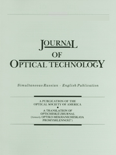
JOURNAL OF OPTICAL TECHNOLOGY
Transforming Knowledge into Optical SolutionsJOURNAL OF OPTICAL TECHNOLOGY, published by the Optica Publishing Group, serves as a vital resource for researchers and professionals in the fields of optical technology and related disciplines. Established with a commitment to advancing knowledge, this journal spans a broad spectrum of topics, including applied mathematics, atomic and molecular physics, and various engineering disciplines, with a converged publication period from 1995 to 2024. Although it currently holds a Q4 ranking across multiple categories in 2023, it is an important platform for innovative research ideas in a rapidly evolving field. The absence of Open Access may guide readers to explore alternative access options through institutional subscriptions. The journal’s ISSN is 1070-9762 and its E-ISSN is 1091-0786, ensuring accessibility for a global audience. As a publication aimed at fostering scholarly communication, it invites contributions that highlight emerging trends and novel developments in optical technology, catering to a multifaceted audience of researchers, professionals, and students.
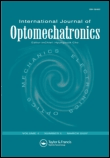
International Journal of Optomechatronics
Illuminating the path to next-generation engineering.The International Journal of Optomechatronics, published by Taylor & Francis Inc, is a leading peer-reviewed journal dedicated to the convergence of optics, mechanics, and electronics. With an ISSN of 1559-9612 and an E-ISSN of 1559-9620, this esteemed journal has been at the forefront of research in Electrical and Electronic Engineering, Instrumentation, and Mechanical Engineering since its inception in 2007. Its exceptional reputation is reflected in its Q1 rankings across multiple categories as of 2023, positioning it among the top-tier journals in the field. As an open access publication since 2017, it encourages wide dissemination of innovative research and technological advancements. With impactful contributions that span applications in robotics, control systems, and advanced manufacturing, the journal serves as a vital resource for researchers, professionals, and students aiming to remain at the cutting edge of optomechatronic science and engineering.
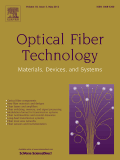
OPTICAL FIBER TECHNOLOGY
Innovating the Future of Light and ConnectivityOPTICAL FIBER TECHNOLOGY is a premier journal in the fields of atomic and molecular physics, optics, control and systems engineering, as well as electrical and electronic engineering, published by ELSEVIER SCIENCE INC. With an ISSN of 1068-5200 and E-ISSN 1095-9912, it offers a platform for disseminating cutting-edge research and developments in optical fiber technology and its applications. The journal has achieved a notable impact, ranking in the second quartile for multiple categories in 2023, including control and systems engineering and electronic, optical, and magnetic materials. By providing a robust avenue for peer-reviewed articles, OPTICAL FIBER TECHNOLOGY caters to a diverse audience of researchers, professionals, and students dedicated to advancing knowledge and innovation in optics and related fields. This respected journal is particularly suited for those seeking to stay updated on the latest technological advancements and research trends, ensuring its relevance in both academic and industrial contexts.
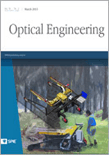
OPTICAL ENGINEERING
Transforming visions into optical realities.OPTICAL ENGINEERING, published by SPIE-SOC PHOTO-OPTICAL INSTRUMENTATION ENGINEERS, is a premier journal in the field of optical and photonic engineering, dedicated to advancing the science and technology of optics, photonics, and imaging systems. With ISSN 0091-3286 and E-ISSN 1560-2303, this esteemed publication has been contributing to the academic community since its inception in 1972, covering a wide array of topics within its converged years of operation. As a recognized entity, the journal is presently positioned in the Q3 quartile for Atomic and Molecular Physics and Optics, and in the Q2 quartile for Engineering (miscellaneous) as of 2023. The journal’s Scopus ranks reflect its impact and significance, being placed at #129 out of 307 in General Engineering and #137 out of 224 in Atomic and Molecular Physics. Although it does not operate under an open access model, the journal remains a vital resource for researchers, professionals, and students seeking the latest advancements in optical engineering. With a focus on publishing innovative research and technical advancements, OPTICAL ENGINEERING continues to be essential for driving progress in this crucial scientific field.

JOURNAL OF OPTOELECTRONICS AND ADVANCED MATERIALS
Driving Excellence in Optoelectronics and Material ScienceJOURNAL OF OPTOELECTRONICS AND ADVANCED MATERIALS, published by the NATL INST OPTOELECTRONICS in Romania, is an esteemed academic journal dedicated to disseminating innovative research in the fields of optoelectronics and advanced materials. With an ISSN of 1454-4164 and E-ISSN 1841-7132, the journal provides a platform for researchers to share their findings and technological advancements from 1999 to 2024. Despite being placed in the Q4 quartile across several categories—including Atomic and Molecular Physics, Condensed Matter Physics, and Electrical and Electronic Engineering—the journal serves as an essential resource for highlighting significant developments in its respective fields. Researchers and professionals may find valuable insights that foster collaboration and inspire further investigation, thereby contributing to the continuous evolution of optoelectronics and materials science.
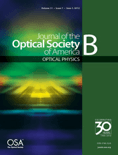
JOURNAL OF THE OPTICAL SOCIETY OF AMERICA B-OPTICAL PHYSICS
Transforming Understanding in Nonlinear Optical PhenomenaJOURNAL OF THE OPTICAL SOCIETY OF AMERICA B-OPTICAL PHYSICS, published by Optica Publishing Group, serves as a leading platform for groundbreaking research in the fields of optical physics, atomic and molecular physics, and statistical and nonlinear physics. With an ISSN of 0740-3224 and an E-ISSN of 1520-8540, this esteemed journal has been in circulation since 1984 and is dedicated to advancing the understanding of optical phenomena and related technologies. It holds a commendable position in the academic community, with a 2023 Scopus ranking reflecting its significance—placing it in the top quartile for both Atomic and Molecular Physics and Statistical and Nonlinear Physics. Although it is not an open-access publication, it provides extensive access options to ensure that research is disseminated effectively within the scientific community. This journal is instrumental for researchers, professionals, and students alike, aiming to keep them informed of the latest advancements and trends in optical science. With a convergence of expertise and innovation, JOSA B continues to play a pivotal role in shaping the future of optical research.
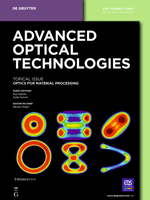
Advanced Optical Technologies
Transforming Discoveries into Optical TechnologiesAdvanced Optical Technologies is a reputable journal dedicated to advancing the field of optics and photonics, published by FRONTIERS MEDIA SA in Switzerland. Since its inception in 2012, the journal has made significant contributions to the domains of Atomic and Molecular Physics, Electronic, Optical and Magnetic Materials, and Instrumentation, achieving commendable rankings within these categories, including a Q2 quartile classification in 2023. With an emphasis on open access, Advanced Optical Technologies aims to facilitate the rapid dissemination of research findings, thereby fostering collaboration and innovation among researchers, professionals, and students alike. The journal serves as an essential platform for cutting-edge research articles, reviews, and technical notes, and its commitment to quality is reflected in its robust Scopus rankings. As the field of optical technologies continues to expand, this journal plays a crucial role in highlighting pivotal advancements and promoting interdisciplinary dialogue among scholars in the scientific community.